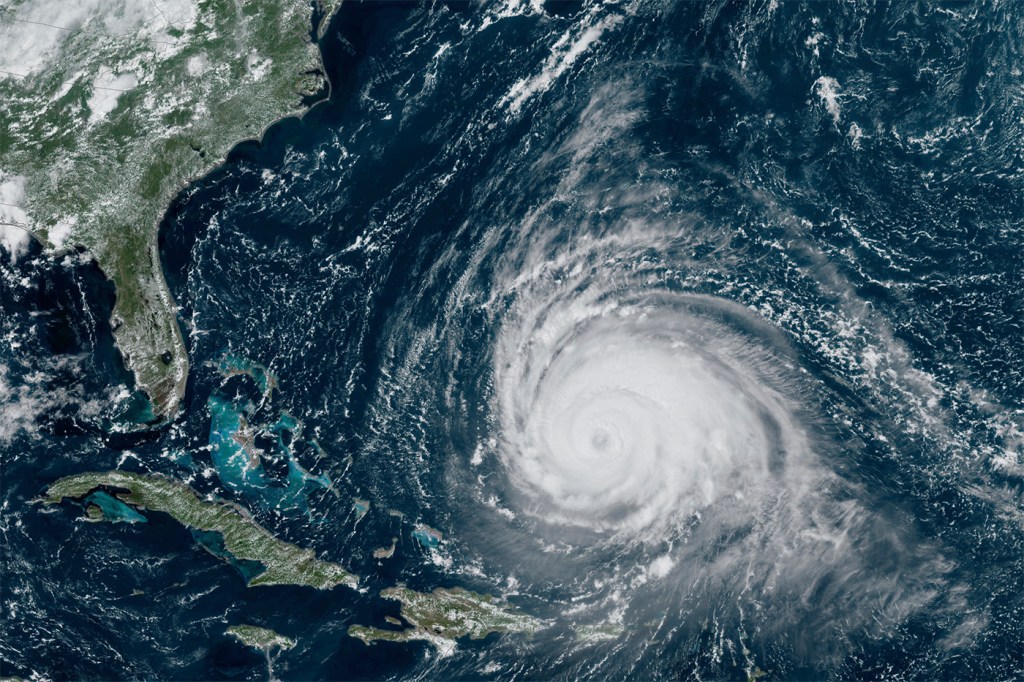As Hurricane Lee approaches, ocean sensors deployed by Northeastern researchers will study wave and storm surge

A hurricane is coming.
Northeastern researchers with the Department of Civil and Environmental Engineering are preparing for the storm.
“We’re trying to get as much data from the storm as we can, and it’s a huge effort to see what we have available to toss into the water,” Julia Hopkins, assistant professor of civil and environmental engineering and affiliated faculty in marine and environmental sciences, says Thursday. “But enough of us are working together that I think we’re going to get some interesting data out of this.”
Hurricane Lee is predicted to remain mainly offshore when it approaches New England early Saturday. But while most of the population will likely see rain and higher winds, Northeastern scientists see the storm as data.
Hopkins and Jim Chen, professor in civil and environmental engineering and marine and environmental sciences, will be monitoring wave action and storm surge in Boston Harbor near Quincy, a portion of Cape Cod and western Penobscot Bay in Maine.
They will be collecting data through buoys aligned with GPS to detect wave activity and pressure sensors that measure the weight of the water above them to record wave energy and storm surge. The scientists are part of a cohort of scientists along the East Coast who collect and share data from storms.
Chen spent Thursday deploying pressure sensors near Quincy, while Hopkins plans to spend Friday putting cameras out to record data.
Hopkins — whose lab studies nature-based solutions as coastal resilience strategies — says that Lee presents a unique opportunity.
“This is one of those rare instances where a hurricane is going to skim Boston and hit Maine,” Hopkins says. “It’s one of the few times where we might see something fairly significant.”
And Hopkins says that, surprisingly, there is little data concerning a storm’s impact on Boston Harbor. She notes that hurricanes and major storms typically get deflected by Cape Cod, and the Boston Harbor islands somewhat protect the inner harbor from severe wave action and storm surge.
But the data they are collecting now and hope to get in the future can help explain how wave energy moves through the harbor, how the hydrodynamics are affected by the islands and the shipping channel, and how much these hydrodynamics contribute to coastal flooding.
“There’s a lot of questions we can start to answer with this kind of data,” Hopkins says.
Those questions can also improve storm modeling and improve the design of nature-based solutions.
“In order to design effective nature-based solutions, you have to know what you’re designing against,” Hopkins says.
Hopkins and Chen are not the only scientists seeking hurricane data.
Jerome Hajjar is the CDM Smith professor and chair of the Department of Civil and Environmental Engineering and affiliated faculty in Marine and Environmental Sciences. He and Andy Myers, professor and associate chair for graduate studies in the Department of Civil and Environmental Engineering, also see the storm as a source of data.
The researchers are involved in a multi-year, and multi-institution, project to help study, document and understand the hurricane risk of offshore wind farms.
“Some wind is good, it creates energy; a lot of wind could damage the turbine,” Hajjar says. “What we’re studying is what’s the likelihood of that, and how do you design to discourage that.”
Hajjar says that wind energy represents one of the largest manufacturing operations in the U.S. in many decades.
“It’s a huge opportunity and a huge undertaking that can provide us with a lot of renewable energy,” Hajjar says.
But with climate change, data from past storms and models need to be updated. Similarly, as climate change makes more extreme weather events happen and sea levels rise, it’s important for Hopkins and Chen to gather data to predict which places will be most affected.
“With climate change and sea-level rise, the harbor might start to get much more interesting,” Hopkins says. “For better or for worse.”
Cyrus Moulton is a Northeastern Global News reporter. Email him at c.moulton@northeastern.edu. Follow him on Twitter @MoultonCyrus.






